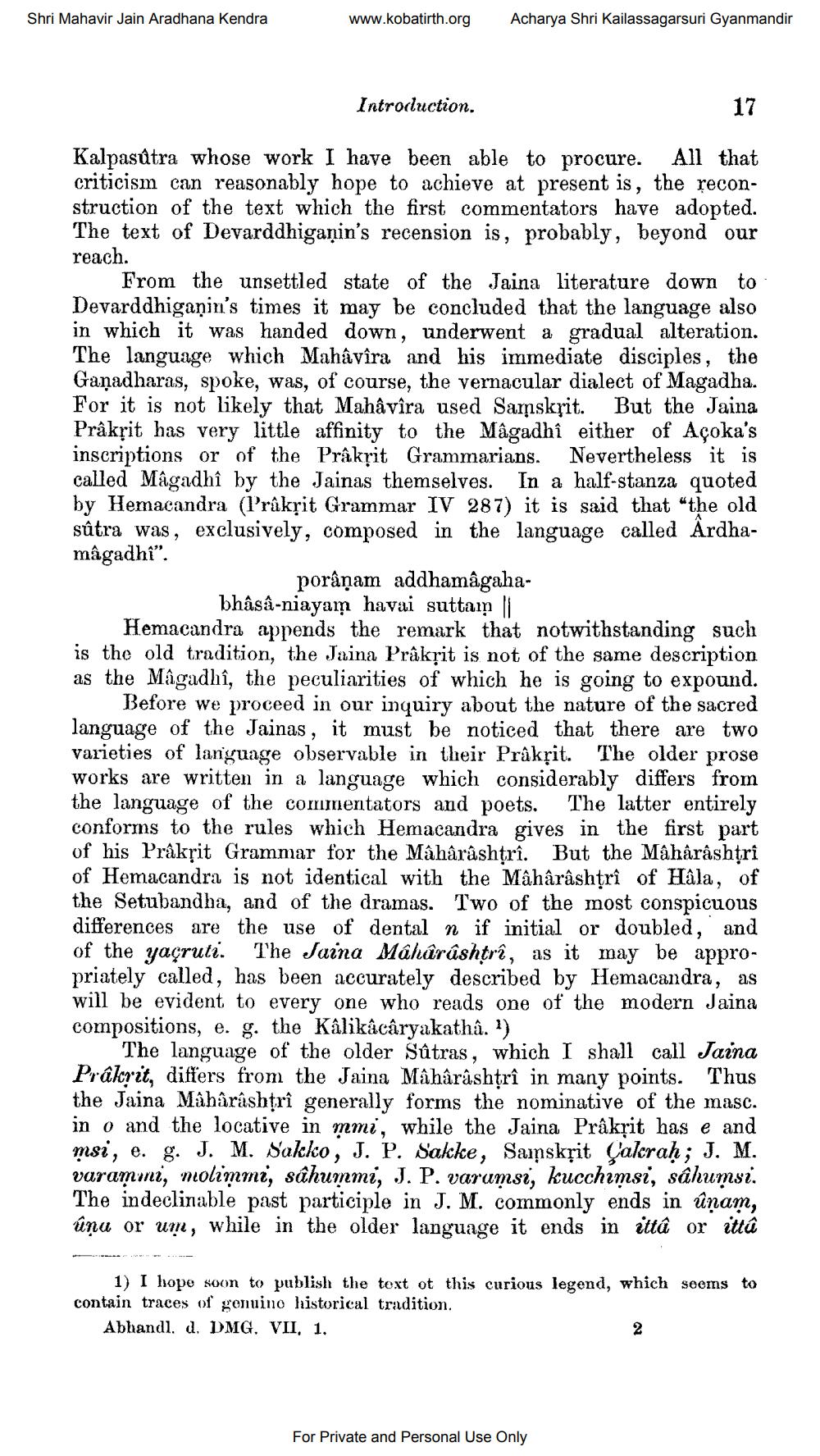________________
Shri Mahavir Jain Aradhana Kendra
www.kobatirth.org
Acharya Shri Kailassagarsuri Gyanmandir
Introduction.
17
Kalpasútra whose work I have been able to procure. All that criticism can reasonably hope to achieve at present is, the reconstruction of the text which the first commentators have adopted. The text of Devarddhigaņin's recension is, probably, beyond our reach.
From the unsettled state of the Jaina literature down to Devarddhiganin's times it may be concluded that the language also in which it was handed down, underwent a gradual alteration. The language which Mahâvîra and his immediate disciples, the Ganadharas, spoke, was, of course, the vernacular dialect of Magadha. For it is not likely that Mahâvîra used Samskrit. But the Jaina Prâkrit has very little affinity to the Mâgadhî either of Açoka's inscriptions or of the Prakrit Grammarians. Nevertheless it is called Magadhî by the Jainas themselves. In a half-stanza quoted by Hemacandra (l'rûkrit Grammar IV 287) it is said that the old sûtra was, exclusively, composed in the language called Ardhamâgadhi”.
porâņam addhamâgahabhâsâ-niayam havai sutta | Hemacandra appends the remark that notwithstanding such is the old tradition, the Jaina Prakrit is not of the same description as the Mâgadhî, the peculiarities of which he is going to expound.
Before we proceed in our inquiry about the nature of the sacred language of the Jainas, it must be noticed that there are two varieties of language observable in their Prâksit. The older prose works are written in a language which considerably differs from the language of the commentators and poets. The latter entirely conforms to the rules which Hemacandra gives in the first part of his Prakrit Grammar for the Mâhârâshtrî. But the Mâhârâshtri of Hemacandra is not identical with the Mâhârâshtrî of Hâla, of the Setubandha, and of the dramas. Two of the most conspicuous differences are the use of dental n if initial or doubled, and of the yacruti. The Jaina Mâhârâshtrî, as it may be appropriately called, has been accurately described by Hemacandra, as
ll be evident to every one who reads one of the modern Jaina compositions, e. g. the Kalikâcâryakathâ.)
The language of the older Sûtras, which I shall call Jaina Prakrit, differs from the Jaina Mâhârâshtrî in many points. Thus the Jaina Mâhârâshtrî generally forms the nominative of the masc. in o and the locative in mmi, while the Jaina Prâkrit has e and msi, e. g. J. M. Sakko, J. P. Sakke, Samskrit Calcraḥ; J. M. varammi, molimmi, sâhummi, J. P. varumsi, kucchimsi, sâhumsi. The indeclinable past participle in J. M. commonly ends in ûņam, üņu or um, while in the older language it ends in ittâ or ittû
1) I hope soon to publish the text ot this curious legend, which seems to contain traces of genuino historical tradition.
Abhandl. d. DMG. VII, 1.
For Private and Personal Use Only




